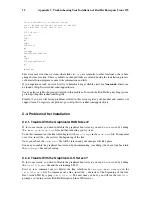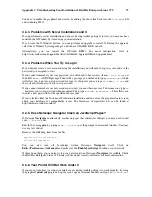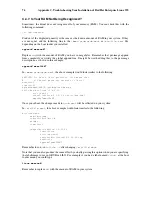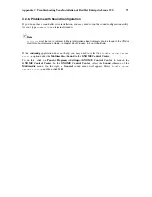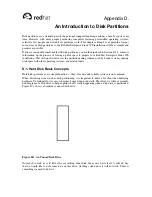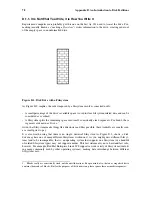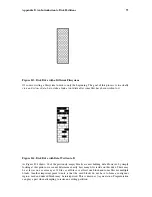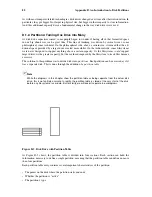
86
Appendix D. An Introduction to Disk Partitions
While the process of non-destructive repartitioning is rather straightforward, there are a number
of steps involved:
•
Compress existing data
•
Resize the existing partition
•
Create new partition(s)
Next we will look at each step in a bit more detail.
D.1.4.3.1. Compress existing data
As Figure D-11 shows, the first step is to compress the data in your existing partition. The reason for
doing this is to rearrange the data such that it maximizes the available free space at the "end" of the
partition.
Figure D-11. Disk Drive Being Compressed
This step is crucial. Without it, the location of your data could prevent the partition from being resized
to the extent desired. Note also that, for one reason or another, some data cannot be moved. If this is
the case (and it severely restricts the size of your new partition(s)), you may be forced to destructively
repartition your disk.
D.1.4.3.2. Resize the existing partition
Figure D-12 shows the actual resizing process. While the actual result of the resizing operation varies
depending on the software used, in most cases the newly freed space is used to create an unformatted
partition of the same type as the original partition.
Содержание ENTERPRISE LINUX WS 2.1 -
Страница 1: ...Red Hat Enterprise Linux WS 2 1 Red Hat Enterprise Linux WS Installation Guide...
Страница 10: ......
Страница 18: ...8 Chapter 1 Steps to Get You Started...
Страница 72: ......
Страница 74: ...64 Appendix A Removing Red Hat Enterprise Linux WS...
Страница 86: ...76 Appendix C Troubleshooting Your Installation of Red Hat Enterprise Linux WS...
Страница 102: ...92 Appendix D An Introduction to Disk Partitions...
Страница 110: ......

